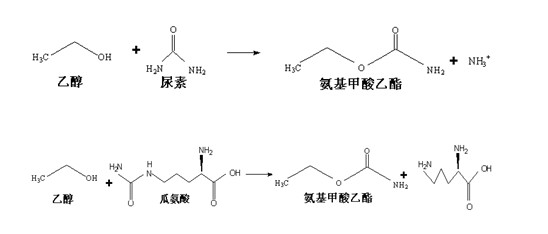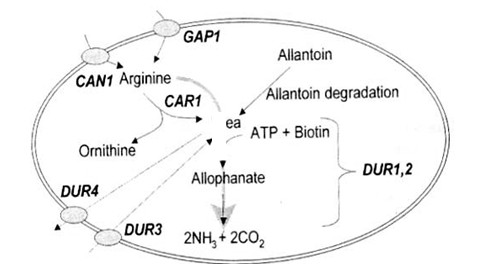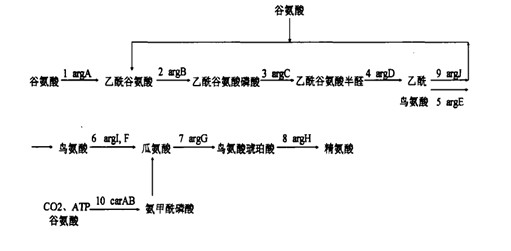Screening method of grape wine yeast with low-yield ethyl carbamate and application thereof
A technology of urethane and wine yeast, which is applied in the preparation of wine, the preparation of alcoholic beverages, methods based on microorganisms, etc., can solve the problems of no successful case reports of breeding
- Summary
- Abstract
- Description
- Claims
- Application Information
AI Technical Summary
Problems solved by technology
Method used
Image
Examples
Embodiment 1
[0086] 1. Activation of Strains
[0087] Take 0.2 g of commercially available F15 active dry yeast, add it to a Erlenmeyer flask filled with 10 mL of 5% glucose solution, and activate it in a water bath at 38-40 °C for 20-30 min until a large number of bubbles are generated.
[0088] 2. Spread 0.1 mL of the activated dry yeast solution on the mixed medium and culture it at 30°C for three days. Figure 6 Shown:
[0089] 3. Pick out the single colonies A1 and A2 that grew on the mixed medium and put them into a test tube filled with sterile water, and then spread 0.1 mL of the bacterial solution on the mixed medium to isolate the single colonies by dilution and separation. separate.
[0090] 4. In order to prevent the strains screened out from the CAN1 mutation, it needs to be verified. Inoculate the single colony grown on the mixed medium on the ornithine medium and the arginine medium respectively, if it does not grow or grows weakly on the arginine medium but grows on the ...
Embodiment 2
[0093] 1. Isolation of Spontaneously Fermenting Yeast
[0094] Collect grape berries at multiple points in the vineyard, remove stems and crush them, put them into sterilized or sulfur-fumigated containers for natural fermentation, inoculate once every three days from vigorous fermentation to the end of fermentation, absorb 0.1mL and spread on YEPD (yeast Complete culture medium.) culture medium, cultured in a 30°C incubator for 2-3 days, and picked a single colony for preservation.
[0095] 2. Screening of WL nutrient medium
[0096] WL Nutrient Medium is designed to monitor microbial populations during beverage fermentation. Studies have shown that most of the typical yeast species that appear during natural wine fermentation can be distinguished by WL nutrient medium, mainly based on colony color and colony shape. The colony color and morphology of Saccharomyces cerevisiae growing on WL nutrient medium are as follows: cream color with green, spherical protrusions, smooth ...
Embodiment 3
[0102] 1. Activation of Strains
[0103] Take the bacterial lawn on the slope of F-15-A1 and put it into a Erlenmeyer flask filled with 10mL of 5% glucose solution, and activate it in a water bath at 38-40°C for 20-30min until a large number of bubbles are generated.
[0104]2. Ultraviolet-acridine orange mutagenesis: Take the well-grown F-15-A1 seed solution, irradiate with ultraviolet light for 90s, and then transfer 600μL of the bacterial suspension undergoing ultraviolet mutagenesis into a test tube containing 5mL of mutagenesis medium Incubate in a dark water bath for 12 hours at 30°C with shaking. (The mutagenesis medium contains 1mg / mL acridine orange, the doses are 80μL, 100μL, 150μL, 200μL, 250μL);
[0105] 3. Spread 0.1 mL of the yeast liquid after mutagenesis on the mixed medium, and culture it at 30°C for 3 days. Figure 13 Shown: Pick out the single colony B1 (F-15-A1-B1) grown on the mixed medium and put it into a test tube filled with sterile water, and spread...
PUM
 Login to View More
Login to View More Abstract
Description
Claims
Application Information
 Login to View More
Login to View More - R&D
- Intellectual Property
- Life Sciences
- Materials
- Tech Scout
- Unparalleled Data Quality
- Higher Quality Content
- 60% Fewer Hallucinations
Browse by: Latest US Patents, China's latest patents, Technical Efficacy Thesaurus, Application Domain, Technology Topic, Popular Technical Reports.
© 2025 PatSnap. All rights reserved.Legal|Privacy policy|Modern Slavery Act Transparency Statement|Sitemap|About US| Contact US: help@patsnap.com



